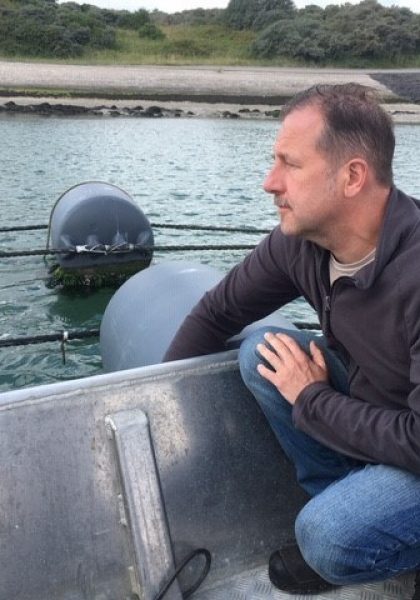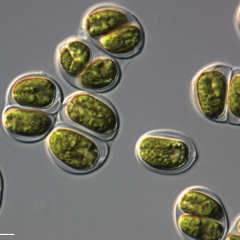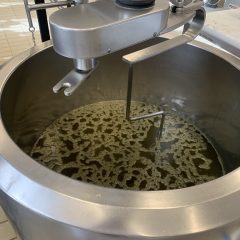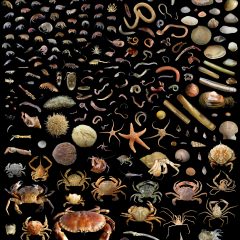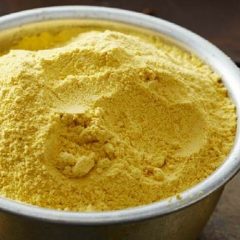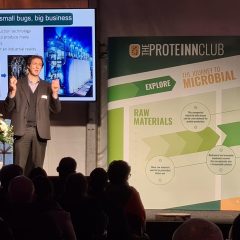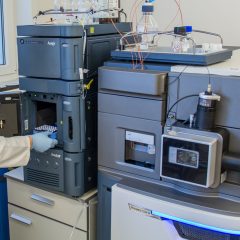Dossier Algae: seaweed and microalgae
Seaweeds and microalgae have great potential as a protein-rich food source. Like animal products, microalgae contain all the essential amino acids (proteins) a human needs, in addition to healthy omega 3 fatty acids, vitamins, minerals and antioxidants. Their palette of flavors is also diverse and to produce them you need barely any land or fresh water.
Valgorize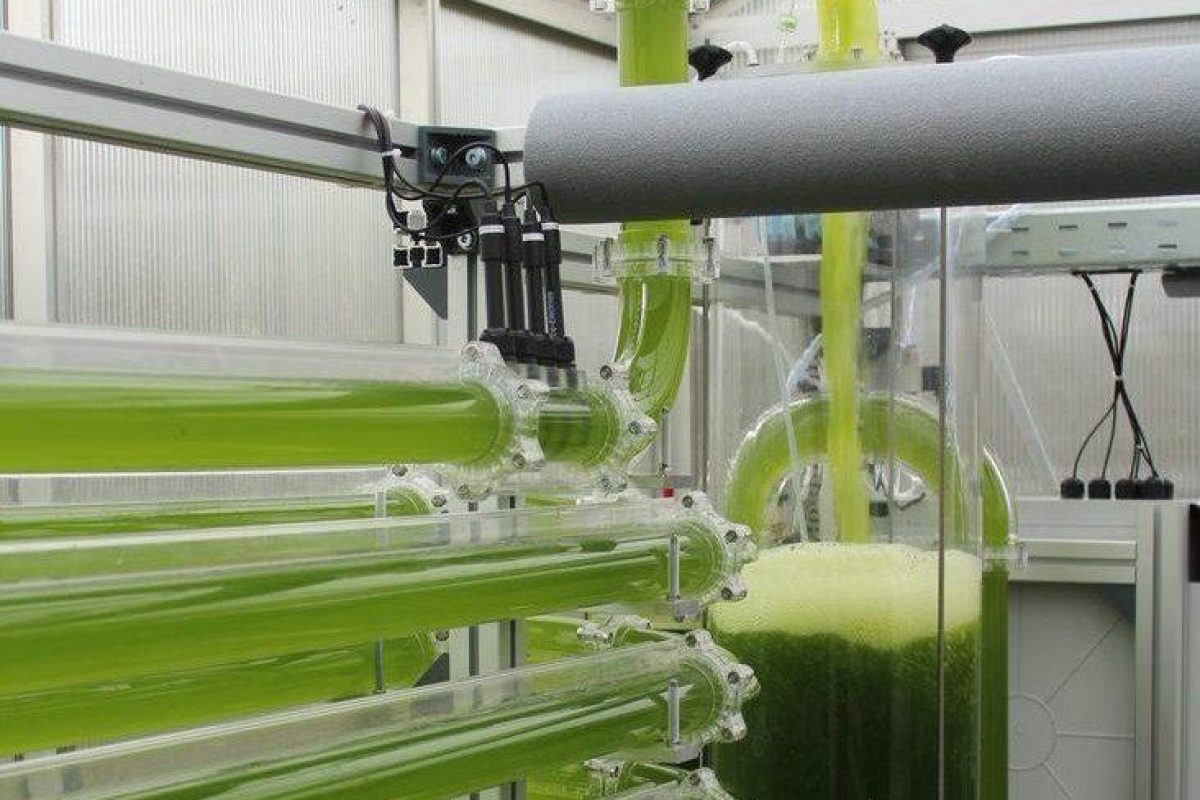
What does ILVO do?
-
 Production of high-quality, safe algal biomass; impact of process factors on algal composition.
Production of high-quality, safe algal biomass; impact of process factors on algal composition. -
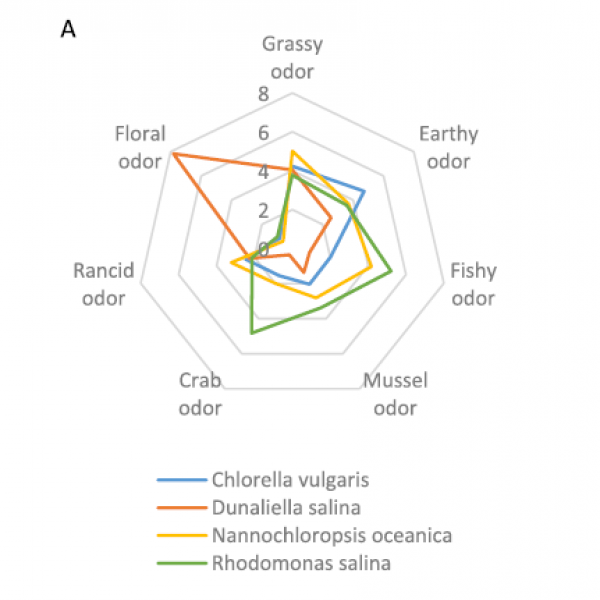 Characterization of the taste and aroma profile of algae. Taste tests in the taste lab with professional taste panel.
Characterization of the taste and aroma profile of algae. Taste tests in the taste lab with professional taste panel. -
 Impact of processing on techno-functionality, color and taste
Impact of processing on techno-functionality, color and taste -
 Impact on color, odor and taste of egg and chicken meat. Impact on methane emissions from cattle.
Impact on color, odor and taste of egg and chicken meat. Impact on methane emissions from cattle.
Cultivation of algae, a sustainable source of protein
Our natural resources are under pressure. Fresh water, fertile soils, pollinators and raw materials and even open space is becoming scarce. However, there is one resource that is barely used and covers no less than 70% of the earth's surface: the seas and oceans. The growth potential of mariculture and aquaculture - in which seawater is used to grow food - is still great. We often think of fish, mussels, oysters and shrimp, but seaweed and microalgae can also be cultivated in salt water.
Circular cultivation
The great advantage of algae is that they hardly need anything to grow. In Europe and Flanders, the focus is also on circular cultivation, where residual or by-product streams from the agri-food industry are used as raw materials: surplus CO2 from the fermenter or nutrient-rich residual water from the food industry are just a few examples.
With or without light
Furthermore, like land plants, algae only require light (intensity) to engage in photosynthesis. Microalgae can even be grown without light, in closed reactors. This has the advantage that the production process can be controlled much better than in translucent reactors or in open vessels.
Energy use
One disadvantage is that a reactor consumes a lot of energy, but even in that area, research is being done on how to make algae cultivation more efficient.
Cultivating microalgae: some facts
- Plant-like single-celled organisms
- Microscopically small and therefore invisible to the naked eye
- Culture: mainly in closed tubes (reactor vessels)
- Color: brown, orange, green, blue
- Hundreds of thousands of known species
Cultivating seaweed: some facts
- Larger plant-like organisms
- Can be seen with the naked eye
- Culture: in open-sea installations or in open vats on land (seawater)
- Color: red, brown, green
- Tens of thousands of known species
High nutritional value
Microalgae and seaweeds may come to play an important role in feeding the world. They are interesting as a source of food for a number of reasons. They score especially well in terms of protein and fat. Moreover, the controlled cultivation and processing conditions ensure a high-quality and food-safe product.
Microalgae
- Right in protein: from 25 to 60% of the dried product.
- Just as fish, dairy, egg and soy, they contain all the essential amino acids that people need, in sufficient amounts.
- Sometimes a pretreatment is needed for better digestibility, but for most microalgae, the protein can be easily absorbed by our bodies (e.g. up to 85% for Spirulina).
- Microalgae contain high amounts of healthy, unsaturated fatty acids such as omega 3.
- Furthermore, microalgae are rich in antioxidants with health-promoting effects, minerals and vitamins.
Seaweeds
- Rich in protein: from 5, 25 to even 47% in the dried product.
- Just like microalgae, seaweed contains all the essential amino acids, for high-quality protein.
- The proteins are easily digested and thus can be absorbed by the human body. Seaweed scores better than protein from plants but a bit less than protein from animal sources.
- Seaweed also has large amounts of healthy, unsaturated fatty acids like Omega 3.
- Just like microalgae, seaweed is an excellent source of antioxidants, minerals and vitamins.
- The salty taste of seaweed comes from potassium chloride. Unlike table salt, this has no influence on blood pressure. Seaweed is thus an excellent salt replacer.
Taste is what makes the difference
Worldwide, about 90% of algae is used for food applications. In Europe, it is only 9%. Both consumers and food producers in our part of the world are rather reluctant. The biggest obstacle is lack of knowledge about the broad palette of flavors and thus the possibilities of using algae in food products.
Eating microalgae: some facts
- Only three species are allowed for consumption in Europe: Spirulina, Chlorella and Tetraselmis Chuii
- Approval procedures for other microalgae ongoing (Novel Food legislation)
- Current application: mainly as a food supplement, increasingly also available as a powder in health food stores
- Flavor palette: surprisingly versatile!
Eating seaweeds: some facts
- Several hundred species are produced commercially for food applications
- Most well-known: Saccharina latissima (sugar kelp or kombu), Ulva lactuca (zeesla)
- Current application: fresh, dried or processed as a functional ingredient (e.g. binder)
How do they actually taste?
In order to overcome the lack of knowledge about taste, ILVO has for the first time, in the Interreg project ValgOrize drawn up reliable and scientifically validated flavour profiles for microalgae and algae. For this purpose, a professional taste panel was trained and chromatographic measurements were performed in the lab.
Watch:
Diverse flavor palette with many possibilities
Surprisingly, algae taste very diverse. There are those that taste fishy, as you would expect, but there are also those that taste rather crabby and even floral (floral). Depending on their specific taste, smell and color, they are less or more suitable for inclusion in certain foods. For example, the red Rhodomonas has a crabby taste which is very nice in seafood dishes, but the orange Dunaliella has a floral taste and therefore does very well in pastries.
 | 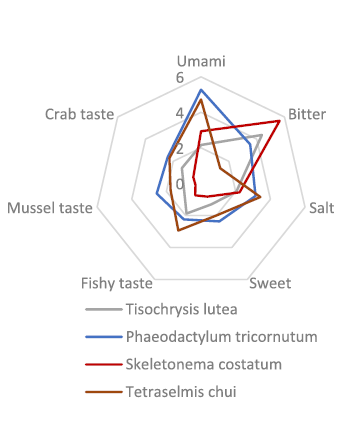 |
Various functionalities
The functionality of algae in foods also varies greatly. Some algae and weeds are foam-forming, others emulsion-forming, still others are excellent as thickeners in sauces. So there is still plenty of potential for innovation.
Johan Robbens, algae specialist at ILVO: "In order to demonstrate that great potential we have developed a few prototypes ourselves with different levels of different algae. Also algae chef Donald Deschagt is doing a lot of innovation in his kitchen. In the meantime, we can speak of successful experiments with herb mix, bouillon cubes, veganaise, cheese, bread and dry sausage, but also with cookies, chocolate and liquor."Cultivating algae: taste, color and composition can be influenced
The color and composition, thus also taste and functionality of microalgae can be (re)controlled by adjusting process factors during production and processing. During cultivation factors such as the amount of light and nutrients, temperature and pH (water) can be adjusted to produce exactly the algae you want.
The processing techniques used, for example to dry algae or extract proteins, also influence the composition of the final product.Geert Van Royen: "A lot of extra knowledge and research is still needed in this area. For example, processing at 25 or 60°C will have an impact on the volatile (flavor) compounds of the algae. It is important to map this out and to standardize it. The first steps are being taken in projects such as ValgOrize and ProFuture."
Growing demand for algae
Consumer acceptance is steadily increasing. The main reason for this is the increasing demand for vegetarian, vegan and natural products, also in the diet of the average consumer. The number of initiatives in Europe to increase the production of algae is also on the rise.
The algae market: some facts
- In 2019, 36 million tons of algae were produced worldwide, mainly in Asia..
- Only 1% of production came from Europe.
- The algae market has a potential value of an estimated $6.6 billion.
For more info, read the report about the European algae market in 2019 (ValgOrize) en the International FAO rapport.
Algae in feed, as soil improver, biostimulant and methane-reducing ingredient?
Algae can also be an alternative protein source or enrichment ingredient in livestock feed. Trials in chickens already yielded promising results. The eggs were of better quality with a better fatty acid profile and had a nicer yolk color.
Algae also have potential as a soil improver and biostimulant with plant protection effects. Studies are starting to see if microalgae can stimulate strawberry growth and make the plants more resistant to disease.Microalgae could also be used in manure processing to reduce emissions from digestate and other end products.
Finally, certain seaweeds and microalgae have potential methane-reducing effects in the rumen of cows. Studies are also being initiated in this area.
Perhaps this can be opened up more widely. In addition to taste, color can also be influenced and, for example, the composition of the proteins (and thus the functionalities). Here, the link can also be made to ProFuture, an H2020 project in which ILVO studies the techno-functionalities of micro-algae and the effect of processing (e.g. extraction of proteins) on them and applications in food.
Contact an expert
